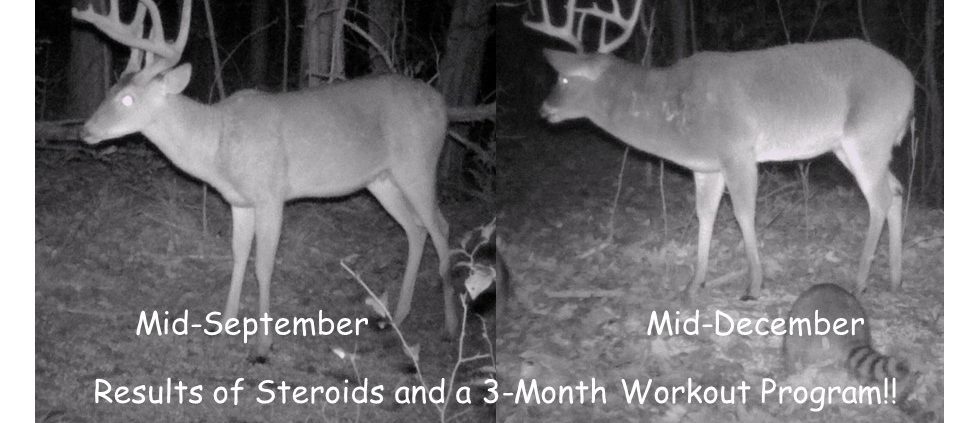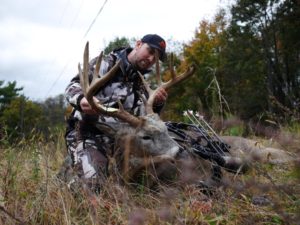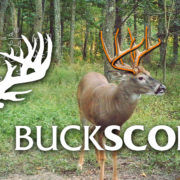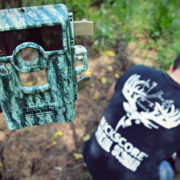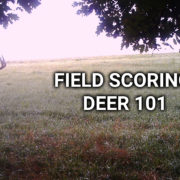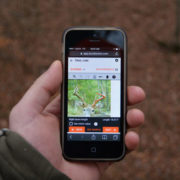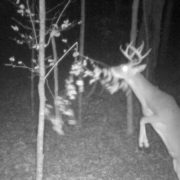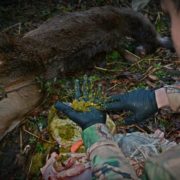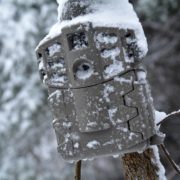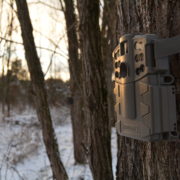Why You Should Consider Seasonal Body Changes When Aging Bucks
Aging Deer on The Hoof | Consider Seasonal Body Changes
Estimating age of photographed bucks can be difficult enough due to less-than-ideal body alignment in the photos. Combining that with seasonal changes in body shape will really increase difficulty. Bucks change dramatically between the early fall compared to when they are primed for the rut, so always consider the date relative to you area’s peak rut. Bucks relax during the summer, putting extra nutrients into body fat and rapidly growing antlers. His interests and activities change once testosterone levels increase dramatically in August, leading to antler hardening and shedding of their velvet during mid-to-late September.
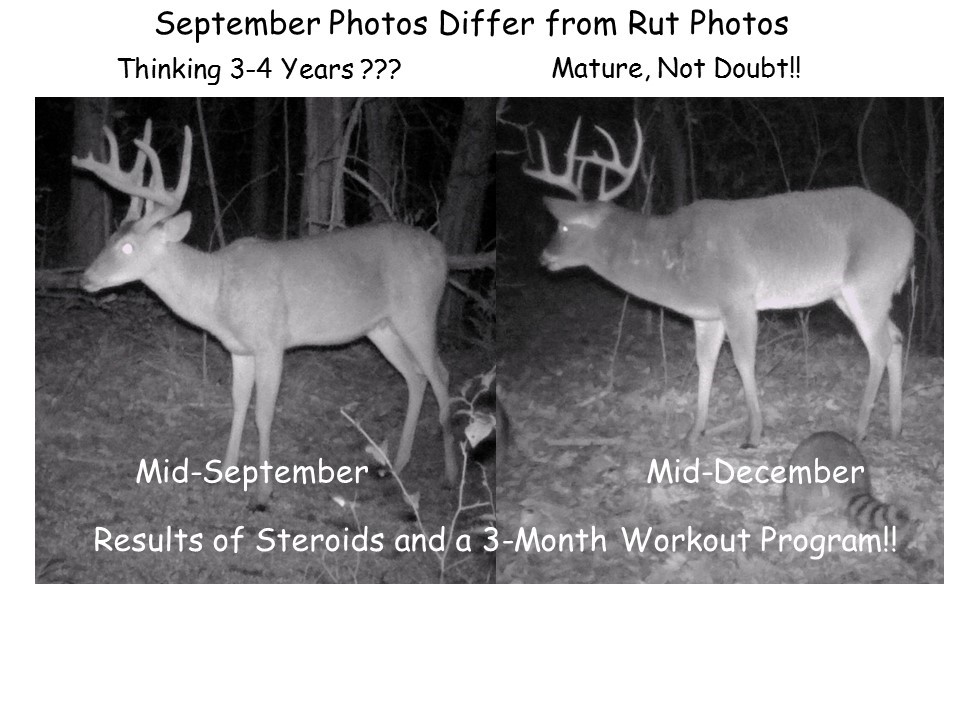
This buck photographed in mid-September has a relatively thin neck, which makes you think he’s 3-4 years old. His antlers look huge, but remember velvet antlers always appear to be larger than fully hardened antlers. Note how much different he looks in December – his neck is much thicker, a result of steroids (testosterone) and 3 month of serious exercise (rubbing, scraping, traveling, and fighting). But, also note his thinner hind quarter in December, which is the result of his reduced feeding activity during his increased exercise (sounds just like most human weight-loss programs!).
